Find Optical Time Domain Reflectometers (OTDR)
Showing 1 - 15 of 205 results
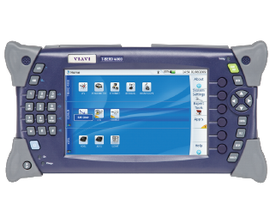
Viavi E4136B-FCOMP-APC
MTS Module; 4100 MODULE B FIBERCOMPLETE - 1310/1550/1625 NM - APC
Rent
Get QuoteUsed
InquireLooking For New?
Finance options available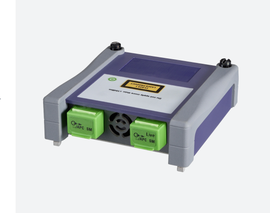
Viavi E4126MA2-APC
OTDR Module; 1310 nm / 1550 nm, APC
Rent
Get QuoteUsed
InquireLooking For New?
Finance options available
Viavi E8126B
OTDR Module; 1310/1550 nm
Rent
Get QuoteUsed
InquireLooking For New?
Finance options available
EXFO MAX-730C-SM2-XX
MaxTester PON/Metro OTDR; 1310/1550 nm and 1625 nm Live Fiber
Rent
Get QuoteUsed
InquireLooking For New?
Finance options available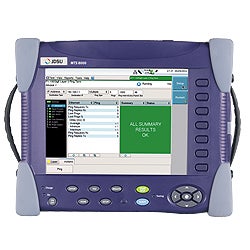
Viavi TB8000-FC2-C3E
Bidirectional Automated Link Characterization Kit - Very Long Range
Rent
Get QuoteUsed
FromLooking For New?
Finance options available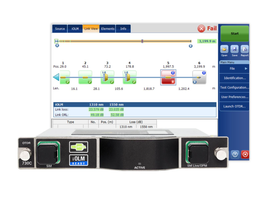
EXFO FTBx-730C-SM1-XX
OTDR Module, SM, 1310nm/1550nm, 39/38dB
Rent
Get QuoteUsed
FromLooking For New?
Finance options available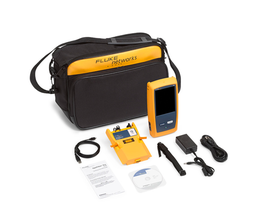
Fluke Networks OFP2-100-QI
Optifiber Pro OTDR; Quad, 850/1300 nm, 1310/1550 nm, V2 Versive Mainframe with WiFi And Inspection Kit
Rent
Get QuoteUsed
InquireLooking For New?
Finance options available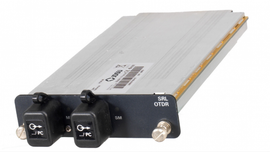
Viavi E8136D
OTDR Module; 1310/1550/1625 nm
Rent
Get QuoteUsed
FromLooking For New?
Finance options available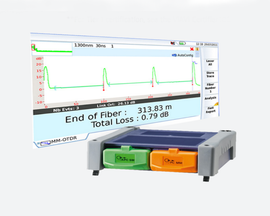
Viavi E4146QUAD
OTDR Module; Quad Mode, 850/1300/1310/1550 nm
Rent
Get QuoteUsed
InquireLooking For New?
Finance options available
Viavi E4136C-APC
OTDR Module; APC 4100 - 1310/1550/1625 NM
Rent
Get QuoteUsed
InquireLooking For New?
Finance options available
EXFO FTB-7600E-0023B-XX
Ultra-Long-Haul SM OTDR Module; 1310/1550 nm (9/125 µm)
Rent
Get QuoteUsed
InquireLooking For New?
Finance options available
Viavi E4138FB65-FCOMP-APC
OTDR Module; 4100 MODULE B FIBERCOMPLETE 1310/1550/F1650 NM, APC
Rent
Get QuoteUsed
InquireLooking For New?
Finance options available
Viavi E4136B-APC
4100 Module B OTDR; 1310/1550/1625 NM, PC/APC
Rent
Get QuoteUsed
InquireLooking For New?
Finance options available
Viavi E4146QUAD-APC
OTDR Module; Quad Mode, 850/1300/1310/1550 nm, APC / PC
Rent
Get QuoteUsed
InquireLooking For New?
Finance options available
Viavi E4126B-APC
4100 Module B OTDR; 1310/1550 NM, PC/APC
Rent
Get QuoteUsed
InquireLooking For New?
Finance options availableShowing 1 - 15 of 205 results
Rent Certified Used OTDR: Optical Time Domain Reflectometer
In fiber optic diagnostics, precision is everything—and a certified OTDR (Optical Time Domain Reflectometer) gives you the accuracy needed to detect faults, splices, and reflections with confidence. Whether you’re validating installations with network and fibre installation equipment, troubleshooting signal loss, or optimizing legacy networks, our high-performance OTDR solutions are built for reliability and speed.
At Electro Rent, we offer a carefully curated selection of used test equipment including used OTDR units from leading global brands—fully tested, calibrated, and ready to perform. Whether you’re looking for the flexibility to rent OTDR equipment per project basis through our full test equipment rental service or planning to buy used OTDR for long-term infrastructure needs, our team helps you make the right choice without overspending.
If you're comparing options across Asia—including OTDR price ranges in India and beyond—we provide expert support to match your technical and financial requirements, with both purchase and rental options available to suit your project needs and timelines.
Our OTDR offerings are trusted by telecom providers, data centres, utility contractors, and research teams across Asia. Clients throughout the region choose us for scalable solutions that support both ownership and rental models, giving them access to cutting-edge fiber test tools without long-term constraints.
From high-resolution fault location to comprehensive fiber mapping, we ensure you have the right tools for every phase of your optical network lifecycle. Need to characterize wavelength performance as well? Explore our optical spectrum analyzer offerings for full-spectrum analysis.
Ready to elevate your fiber testing strategy? Connect with us today to rent or buy an OTDR that fits your needs—anywhere across Asia.
Frequently Asked Questions
- How do OTDRs work?
OTDR testers contain a laser source that sends out a pulse of light at a specific wavelength. As the pulse moves through the optical fiber under test, the OTDR detects the light that reflects or refracts back down the fibre toward the device. By analysing the returning light from the pulse the instrument can determine the type, location, and loss value of events in the cable. Displaying this on the screen of the tester allows users to diagnose issues from the optical return loss and reflectance. - How do I choose the right OTDR?
Many factors impact the type of OTDR which is right for your application. Firstly, the type of networks under test and the fiber types should be considered. Whether you opt for a singlemode or multimode OTDR will depend on the type of fibers you will be testing and the type of measurements you will be making are also important when choosing a device. The dimensions and weight of the tester are also important to consider so that you have the right balance of function and portability. Other factors that may make a difference are the battery life, size of the display, and storage capacity for results. Whether the device is compatible with intelligent optical link mapping is another thing to consider. - What's the difference between an OTDR and IOLM?
IOLM or intelligent optical link mapping is a way of enhancing your OTDR testing through automation. An IOLM application simplifies complex trace analysis by automatically defining the testing parameters and interpreting the multiple traces for you. Many of the OTDRs we stock are compatible with intelligent optical link mapping. - What wavelengths do OTDRs operate at, and why does it matter?
Many OTDRs work at ordinary wavelengths (for example 1310nm and 1550nm) that are well suited for typical single-mode testing. For FTTx or passive optical network(PON), more wavelengths, such as 1490 nm, 1625 nm, and so on, are indispensable for operation. Appropriate wavelength selection enables accurate fault and reflectance/attenuation detection at the fiber link. - What is dynamic range in an OTDR, and how does it affect testing?
Dynamic range is the OTDR’s capacity to see weak reflections at greater distances. With a higher dynamic range (i.e., 35–45 dB) you can verify longer fiber runs and find small problems with more certainty, which is critical for metro and long-haul applications. - What are event and attenuation dead zones, and why are they important?
Event dead zones determine how close two events can be and be separated by detection. Attenuation dead zones influence the ability to measure gradual signal loss. Short dead zones OTDRs will be in demand in high-density environments such as data centers where the connectors and splices can be very closely spaced to each other. - Can OTDRs be used for FTTx or PON testing?
Yes. FTTx/PON dedicated OTDRs have a very high dynamic range and superior filtering to characterize events even through the splitters. Such modules typically work at 1490 or 1625 nm wavelengths and can feature dedicated PON test modes for precise fault location. - Are handheld or portable OTDRs available for field testing?
Absolutely. Deployment ready, portable, battery operated, touchscreen, and rugged OTDRs are available in a handful of field ready, lightweight, handheld formats that are easy to transport in the field or to a telecom closet, or even out on the strand or in an outdoor enclosure. - Do OTDRs include other functions like VFLs, power meters, or inspection scopes?
A few OTDRs have the advantage of an all-in-one unit with VFL’s, optical power meters and video inspection probes. These functionalities allow for fiber testing to be simplified while minimizing the need for additional test tools. - Can OTDR test results be exported or saved for reporting?
Yes. Your typical OTDR will have a USB or SD card for saving your trace results and PDFs, or export the information to the cloud and share the file with a fellow tech. Some of them also include an automatic report feature that is used for documentation or turning in other project documentation. - Why rent an OTDR?
Giving you the flexibility you need, renting an OTDR allows you to access the right equipment at a fraction of the cost of buying, with no delays or downtime. With our rental solutions, you can use top-of-the-range OTDRs without any of the upfront costs. Plus, if your testing and measurement needs change it’s easy to change your rental, too. - Why buy used OTDRs?
You can access top-quality OTDRs at stunningly low prices by buying certified pre-owned instruments. All fully tested and calibrated by our experts, our pre-owned OTDRs are on sale for a fraction of the price of new devices. Buying pre-owned is one of the most cost-effective solutions for all your optical fiber testing needs.
Need Help Choosing Test Equipment?
Our Knowledgeable Team of Experts is at Your Fingertips, Ready with Solutions to Address Every Application Challenge.


